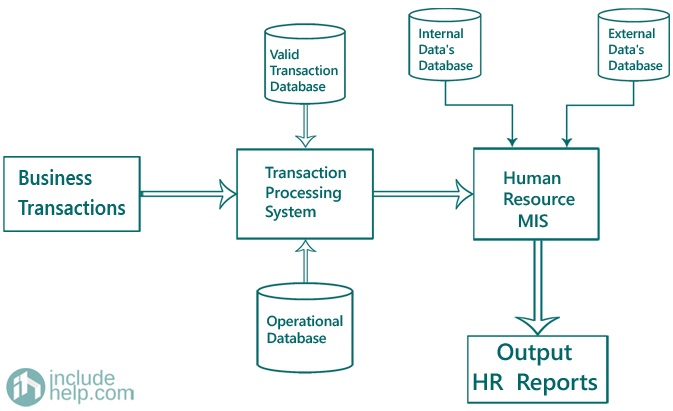Home »
Management Information System
Human Resource Management Information System & It's Elements
In this tutorial, we will learn about the Human Resource Management Information System, and its elements, etc.
By IncludeHelp Last updated : June 01, 2023
What is Human Resource Management Information System?
An information system that is specially designed to automate human resource activities in an organization is known as Human Resource MIS. This system is mainly concerned with all activities related to the organization's staff and future employees.
The information system for Human Resource Management can be viewed as a way for large and small organizations to take care of a variety of operations, including human resources, accounting, management, and payroll, using MIS application software. A human resource management information system makes it possible for an organization to more efficiently plan its strategic HR planning, track and monitor them without allocating too many resources.
In most cases, when it comes to making HR decisions, a human resource management information system would also contribute to improved organizational effectiveness. The quality of the decisions taken should also increase and, as a consequence, the efficiency of both employees and executives should increase and become more efficient.
In a Human Resource MIS, some of the typical subsystems include design and engineering, planning of production, inventory management, process control, and quality control.

Fig 1: Human Resource Management Information System
Elements of a Human Resource Management Information System
The structure of a Human Resource Management Information System has described below. The key components of the human resource information system are as follows –
- Training records
- Transaction Processing System
- Operational database
- Internal database
- External Database
- Database of validation Transactions
- Human resource MIS
- Human resource Application Database
- Human resource Decision Support System
- Human resource Executive System
The description of these elements is as follows -
- Training records - the training data records of employees are captured through MIS as a historic record so that it can be used for analysis whenever required.
- Transaction Processing System - An HR Information System (HRIS) is a type of information system called "Human Resource Management Information System (HRMIS)" that is capable of storing, recording, updating, and retrieving the employee's information system. While transaction processing systems need to be able to have highly consistent response times, this is a very important feature when it comes to trading systems.
- Operational database - a database is an operational database that is designed to operate or run the day-to-day operations of your business. It also has a strong ability to act as an analytic engine, either through dashboards and web-based solutions or supporting the ability to incorporate analytics into organizational processes.
- External database - a database in which internal documents of organizations store. An internal database is a collection of one of your company's records, gathered from employees using an internet-connected device. Digital files consist of decentralized, encrypted data, which are not known to anyone and include details such as, which purchases made up items.
- Internal Database - a database in which internal records of organizations store. Internal database - a database in which internal records of organizations store. An internal database is a compilation of company data collected by employees using Internet-connected computers.
- Database of validation transactions - the validations of transaction refers to the accuracy and completeness of the information.
- Human Resource MIS - the Human Resource information system includes the systematic selection, analysis, interpretation, preservation, and distribution of all of the consumer information that is available to the company.
- Human Resource DSS - Human Resource decision support systems is an information system that assists with decision making in the development of a Human Resource strategy.
- Human Resource ES - Human Resource executive systems are intended to be used by the senior managers in decisions making.
- Human resource Outputs -Human resource MIS output can be collected in the form of hard copies as well as in computerized form.
Overall Human resource MIS supports human resource business activities. These are as follows -
- Design and engineering
- Training test scores
- Scheduling human resource departments activities
- Job applicant profiles
- Scheduling reports
- Human resource planning
- Just-in-time inventory and human resource
- Process control
- Computer-integrated human resource (CIHR)
- HRM reports
- Quality control and testing
- Needs and planning reports
- Salary surveys
Human Resource MIS Functional Areas
The key Human Resource MIS functional areas are as follows -
The types of knowledge which the functional areas will include the following:
- Tracking leaves.
- Tracking the staff records in terms of permanent jobs and temporary job.
- Tracking workers whose jobs are deemed obsolete and who are subsequently rehired.
- Maintaining demographic details for areas such as succession planning and opportunities for early retirement.
- Collective bargaining, such as the cost of employee benefits and the cost of adjustment projections.
- Profile of the employee, including experience, training, professional membership and abilities.
- Performance assessments. and the administration of overtime.
Advertisement
Advertisement